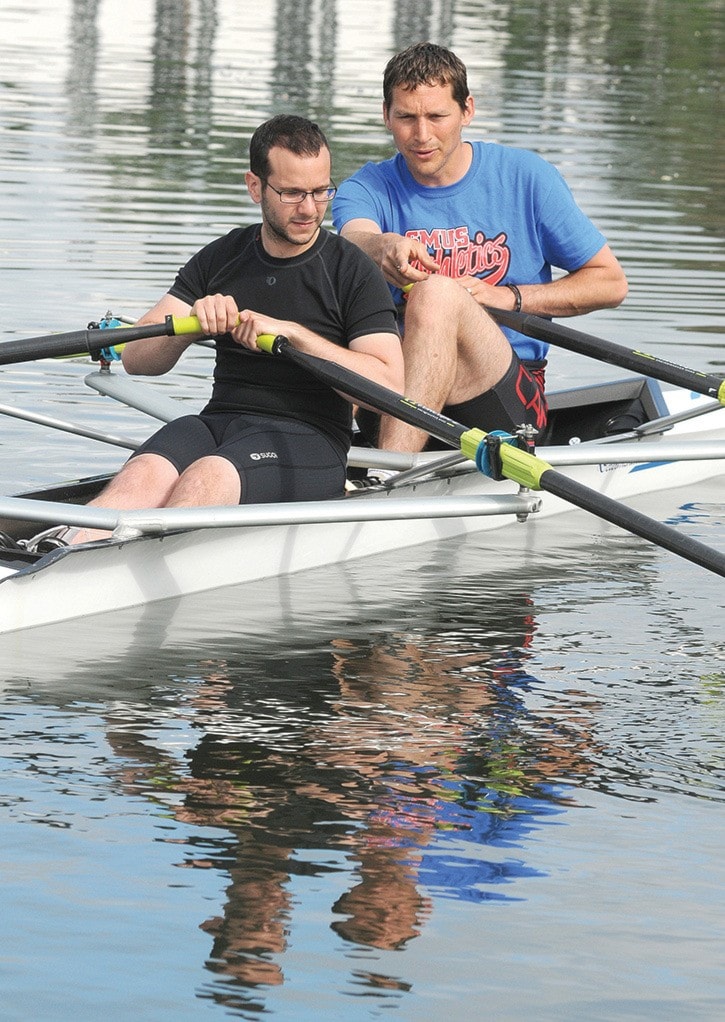Before setting out from the starting gate in Beijing, David Calder and Scott Frandsen metaphorically threw all the undesirable dead weight off their shoulders into the waters to give it their all.
This was a ritual for the two Olympic rowers before each race. Had I been sitting in Frandsen’s seat on Aug. 16, 2008, Calder probably would have tossed me in – not metaphorically.
It’s a sunny Sunday morning when Calder and I meet on a quiet Selkirk waterway. I’m thankful the water’s dead; it’s my first time rowing, and even though there’s no one better than an Olympic medallist to be in the double scull with me, I’m terrified of somehow wrecking the boat. Or worse, injuring Calder by doing something amateurish.
Calder throws a lot of information at me – and rightfully so. I’m asking him to condense a months-long rowing course into a couple of hours.
Rowing, I quickly find out, is a complicated sport. From falling into a rhythm so your legs, body and arms are timed perfectly with the boat’s momentum, to getting the oar in and out of the water smoothly and in sync with Calder, it’s very easy to injure yourself or mess up the fluidity needed to propel the boat.
“When you were really thinking about it, really analyzing it and trying to think of all the 1,000 things that I threw at you, that’s when you started to gum up and make mistakes,” Calder tells me off the water. “But as soon as you just wanted to make the boat go, as soon as you tried to use your intuition, that’s when you started to flow.”
Maybe he’s just humouring me, but I did better than I expected to do. I caught many crabs (rowing slang for messing up a stroke), and my good strokes didn’t last long before I caught another crab. But Calder and I made it back to shore both dry and in one piece. (The boat was also undamaged!)
Now that he’s seen what I’ve got, Calder, a four-time Olympic athlete who earlier this year left a government job to manage the St. Michaels University School rowing club, admits he’s still happy he had Frandsen as his other half in Beijing and not me.
“With Scott, our time in that Olympic final was 6:39,” he says. (That time earned the duo a silver medal.) “You and I, conservatively, we would’ve been 12:46 at the fastest. … I would’ve just been happy getting across the finish line with you without flipping.” I think ‘happy’ is Calder mincing words.
He is as professional as athletes come.
“I stuck around from Olympics to Olympics [he and the men’s eight team finished seventh in Sydney in 2000, and he and Frandsen were disqualified in Athens in 2004] because what I wanted more than anything and what any athlete wants more than anything is an opportunity in a fair and clean setting to demonstrate how good they are,” Calder says. “When Scott and I lined up on August 16 in 2008, that’s what we did. We demonstrated from stroke 1 to stroke 263, how good we could be. And no slight against you, you and I wouldn’t have had that opportunity.”
I’m glad that serious weight to perform alongside Calder was never on my shoulders – both in Beijing and on the Selkirk.
